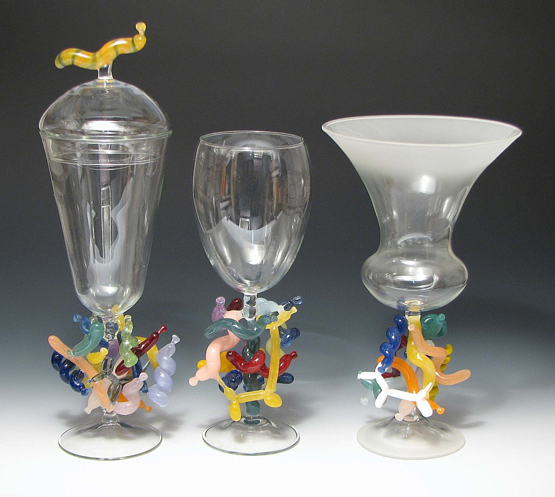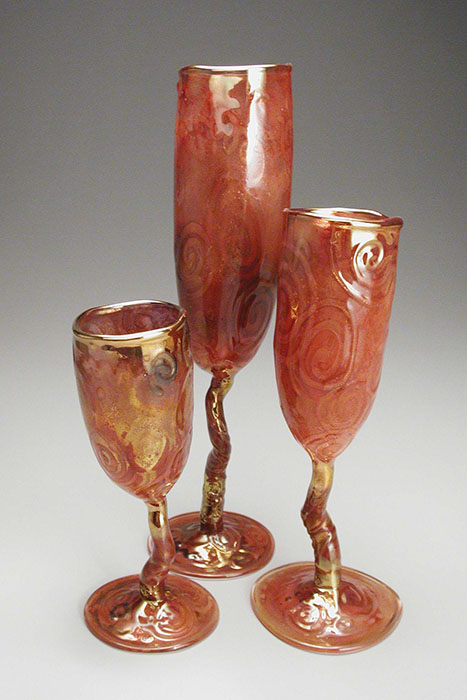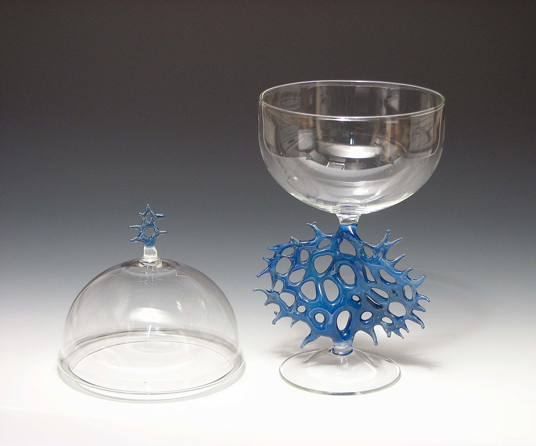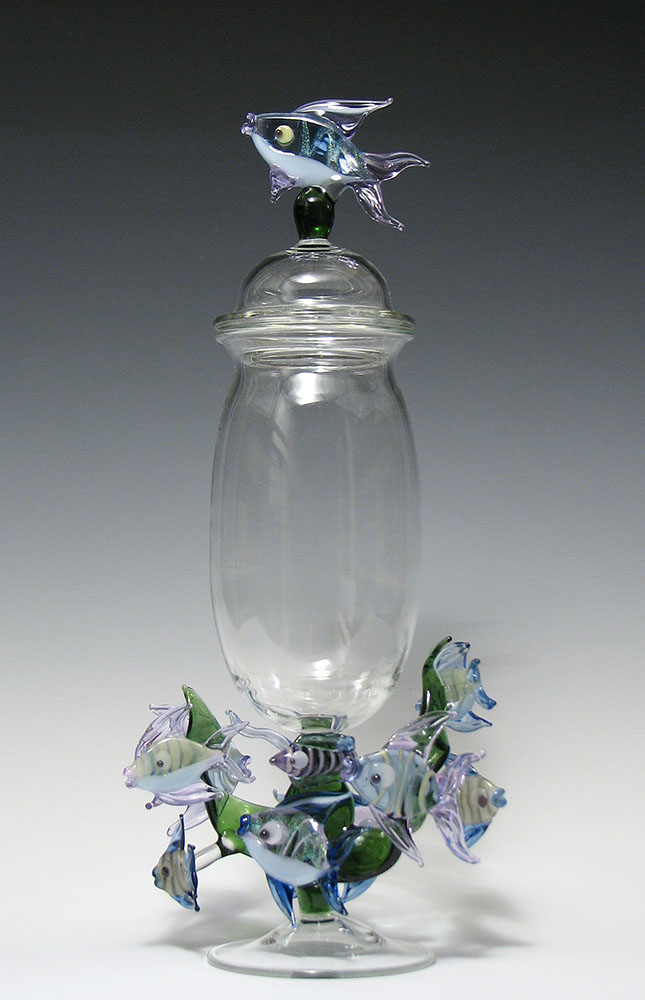Goblets
I experience the goblet form as a traditional vehicle to be explored in new ways. Aside from the technical challenges of making a goblet (which are not inconsiderable), I think artists are called to interpret this ancient form with a fresh approach that blends surprise with familiarity. As an object of composition, goblets have three basic components: the bowl, the stem and the foot. These components exist in a rhythmic relationship, which the artist manipulates to achieve a desired effect. The tools with which the rhythmic relationship is manipulated include similarity and contrast in form, color and pattern. Furthermore, the elements of functionality and traditional social purpose invite another level of exploration as we consider the implications of how we think and feel about this familiar-but-still-not-completely-explored archetype. So goblets can be enjoyed simply for their immediately obvious form, but also on a deeper level if we consider the traditions from which they spring.
Finally, I embrace goblets as a vehicle for the free play of wit. Just as wine might make us a bit loquacious as we celebrate a special occasion, the goblet form seems to invite clever or whimsical twists in the form of visual (or even verbal) punning. This attitude is definitely visible in my goblets.










